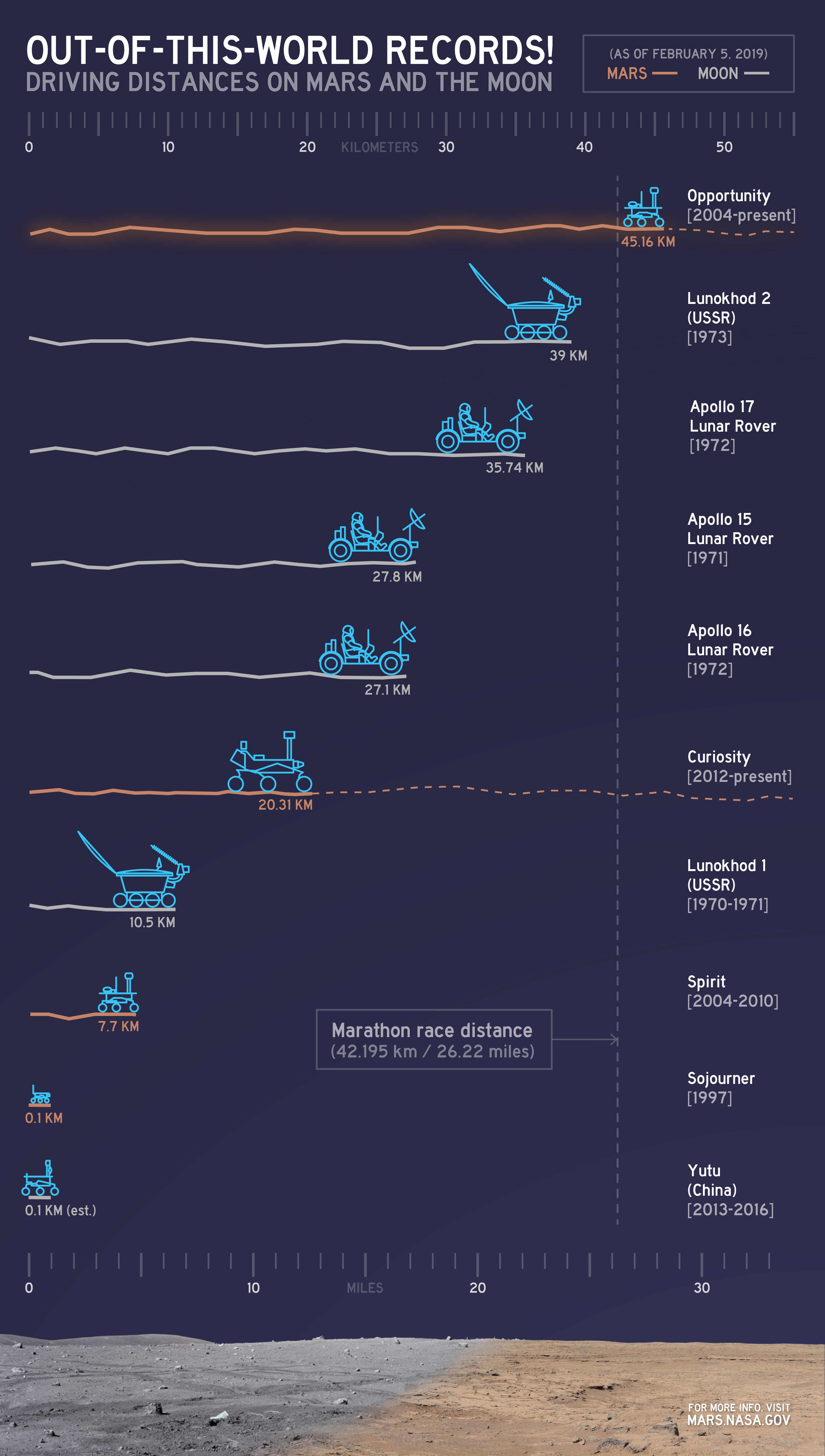The Epic Driving Record of NASA's Opportunity Rover on Mars
NASA has officially stopped trying to contact its Opportunity rover on Mars, but before the robot went silent, it claimed a dramatic record: farthest distance driven on another planetary body.
All told, the rover drove more than 28 miles (45 kilometers) in the course of more than 14 years of successfully operating on the Red Planet. The current runner-up is the Soviet lunar rover Lunokhod 2, which drove 24 miles (39 km) on the moon in 1973.
Its record makes Opportunity the only interplanetary voyager to complete the equivalent of a marathon race, covering 26.2 miles in 11 years and two months.
Opportunity has left all of its Martian competition in the dust: Curiosity is the next most traveled Mars rover and has covered just 12.5 miles (20 km) during its six and a half years on the Red Planet. Opportunity also vastly outpaced its twin rover, Spirit, which covered less than 5 miles (7.7 km) before ending up trapped in the Martian sand.
There's no predicting how long Curiosity or future lunar or Martian rovers may manage to survive, and how many miles they can rack up in that time. Curiosity is already into an extended mission design. Two other future Mars rovers are in the works: NASA's next Mars rover, traveling with the Mars 2020 mission, is designed to last about two terrestrial years; the European Space Agency is launching a rover on the same schedule but has not provided an estimate of its mission duration.
Potential record breakers on the moon's surface are even more uncertain right now, although NASA hopes to include rovers in the suite of lunar-exploration steps it plans to take to establish a long-term human presence at the moon.
Email Meghan Bartels at mbartels@space.com or follow her @meghanbartels. Follow us on Twitter @Spacedotcom and on Facebook.
Breaking space news, the latest updates on rocket launches, skywatching events and more!

Meghan is a senior writer at Space.com and has more than five years' experience as a science journalist based in New York City. She joined Space.com in July 2018, with previous writing published in outlets including Newsweek and Audubon. Meghan earned an MA in science journalism from New York University and a BA in classics from Georgetown University, and in her free time she enjoys reading and visiting museums. Follow her on Twitter at @meghanbartels.

